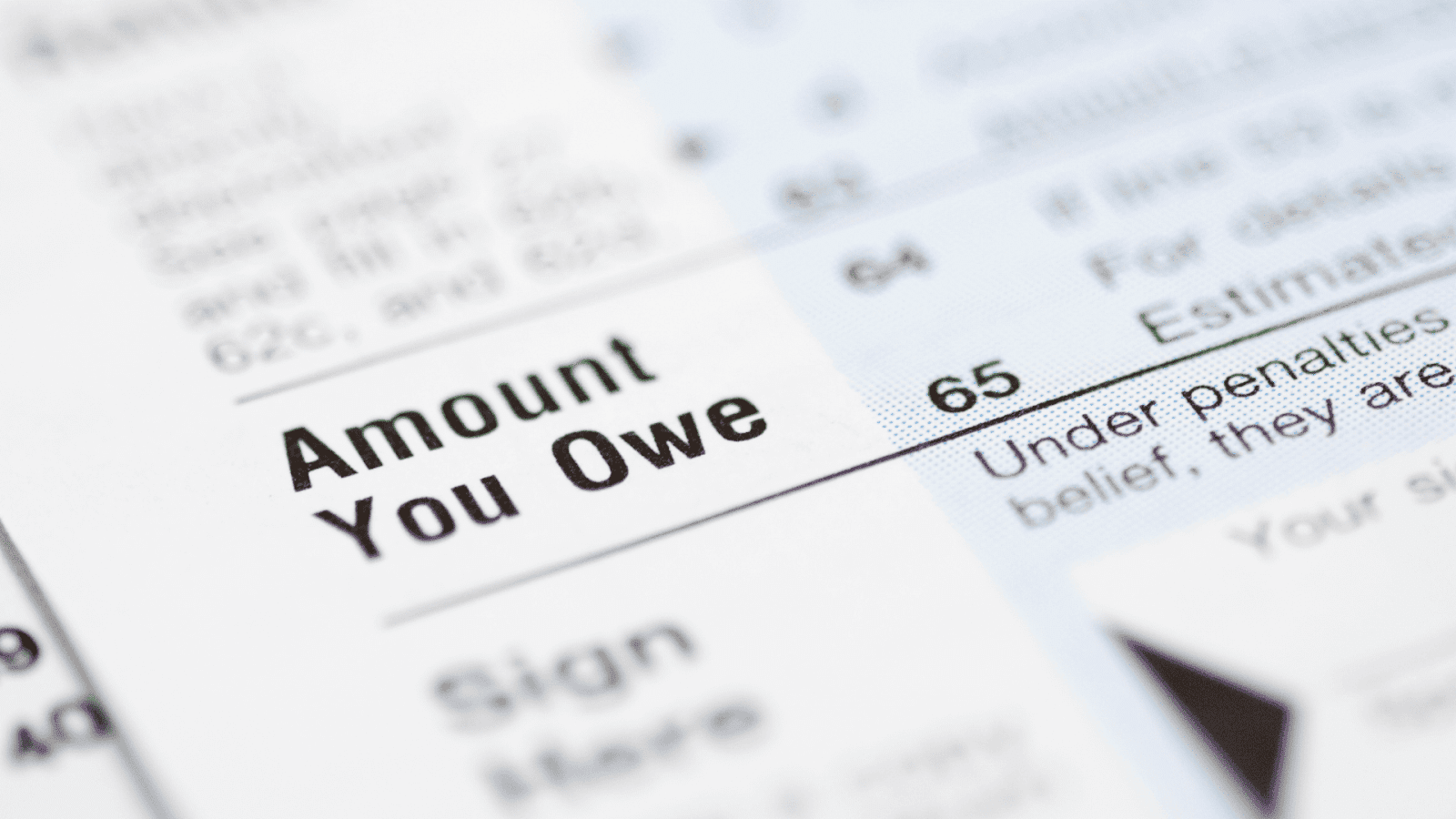
If you owe back taxes to the IRS, you’re far from alone. At the end of FY 2024, the IRS collected $77.6 billion in unpaid tax assessments, an increase of 13.6% over the previous year. Meanwhile, millions of individuals carry tax debt, often unsure how to handle penalties, interest, and collection notices.
That pressure builds fast. What begins as a missed deadline can spiral into wage garnishment, bank levies, IRS liens, and lots of sleepless nights. The worst part? Many people don’t realize relief options are available until they’re overwhelmed.
In this blog, we’ll walk you through how to settle your IRS tax debt step by step. You’ll learn how to figure out what you really owe, what options the IRS offers to reduce or spread out payments, and how to avoid common mistakes.

Before you can settle IRS tax debt, you need the full story. Many people guess at their balance or rely on old notices, only to discover the amount has grown with penalties and daily interest. Here’s how to get accurate numbers:
You can view your tax balance, payments, and account status anytime.
Obtain official detailed IRS records of your filings, payments, and adjustments.
Verify IRS data accuracy by comparing with your own tax returns and payment receipts.
When you realize how much you owe (see previous section), the next step is to figure out what you can really afford, and which IRS relief options match your situation. This helps avoid trying something you can’t qualify for. Below are how to assess your finances and the main IRS programs that often help.
Start with a realistic “money inventory.” Here’s how:
Calculate your disposable income: how much you have left after covering essentials. If that number is very small or negative, you may have hardship. If there's some leftover, that informs how big a payment you can offer or how long you might stretch out payments.
Here are common IRS paths people take. Depending on your finances, one may be a good fit:
Also Read: Steps to Successfully Negotiate with Debt Collectors
Here are a few guiding questions to help decide which option may suit you best:
1. Can you make a monthly payment without cutting out essential costs?
If yes → Installment plan may work.
2. Is your leftover money (after essentials) very low or negative?
If yes → Hardship / CNC may be needed, or Offer in Compromise if documents show you can’t pay.
3. Do you have assets that the IRS could tap into?
If yes, the IRS may expect you to use them under certain plans. If no, that strengthens your case for relief.
4. Are your tax returns up to date?
Crucial. If you’ve missed filings or estimated payments, many programs won’t qualify.
5. How large is your tax debt?
Under ~$10,000 tends to allow more flexible, simpler plans. A bigger debt requires more documentation and possibly stricter terms.
If navigating IRS tax debt settlement feels overwhelming, South East Client Services can simplify the process for you. Their expert team negotiates directly with the IRS to reduce what you owe and set up manageable payment plans tailored to your financial situation.

Once you know what you owe and have a realistic picture of your finances, it’s time to take action. Acting early shows good faith and can stop penalties from piling up.
Prompt communication with the IRS helps prevent penalties and collection escalation.
Installment plans spread tax payments over time, easing financial burden.
Offers in compromise reduce tax debts for qualifying taxpayers.
Expert guidance improves negotiation success and protects taxpayer rights.
Also Read: Leveraging AI-Powered Debt Management Plans

Getting an installment plan or other relief is only half the battle. Many taxpayers accidentally break the terms and end up back at square one. Here’s what to watch out for:
Even a single missed payment can cancel your agreement and restart aggressive collection actions like wage garnishment or bank levies. It may lead to wages being garnished within weeks, causing financial strain beyond the initial tax debt.
Tip: Set up automatic withdrawals from your bank account so payments never slip through the cracks.
The IRS requires you to stay current on all future returns and estimated tax payments while on a plan. Skipping filings or underpaying estimated taxes can void your agreement and trigger penalties. It may lead to losing the installment agreement, leading to immediate full payment demands.
Collection letters and reminders don’t stop after you sign an agreement. Missing critical requests can result in suspension or termination of your settlement. For instance, failure to respond to an IRS documentation request leads to the revocation of a hardship status for an individual, resuming full collection efforts.
Promising a monthly amount that’s too high can lead to missed payments and cancellation of the agreement. The IRS prefers smaller, steady payments you can maintain over big payments you can’t.
Beware of companies that guarantee total debt forgiveness or demand large upfront fees. Many victims signing with fraudulent firms may end up owing even more due to added penalties and missed legitimate payment opportunities. Only work with licensed tax professionals or a trusted firm such as South East Client Services, which offers flexible, transparent payment options and digital tools to track your account.
Also Read: Identifying Legitimate Debt Collection Operations
Different IRS tax relief options suit different financial situations because they balance affordability, qualification criteria, and the IRS’s goal to recover the most realistically collectible amount. Here’s why some options might work or not work for you:

Settling your IRS balance isn’t just about closing today’s gap, it’s about building habits that keep you on track:
By staying organized and proactive, you’ll avoid late fees and keep future tax seasons worry-free.
IRS tax debt can feel overwhelming, but you have real solutions: payment plans, offers in compromise, penalty relief, and hardship programs. The key is to act early, choose a plan you can afford, and stay current on future taxes.
If you’d rather not tackle the IRS alone, South East Client Services is ready to help.
Don’t wait for penalties to pile up or for the IRS to garnish wages. Contact South East Client Services today to create a clear, manageable path to settling your IRS tax debt and reclaiming your peace of mind.
You cannot settle or negotiate with the IRS if any required returns are missing. The IRS requires all past tax filings to be completed and submitted before considering any payment plan, offer in compromise, or settlement. Filing your back taxes ensures that your account is accurate and eligible for any debt resolution options.
A CPA primarily handles preparing and filing your tax returns correctly, ensuring compliance with tax laws. A tax attorney provides legal protection, representation, and guidance in disputes with the IRS, while tax-resolution firms like South East specialize in negotiating payment plans, offers in compromise, and managing the overall IRS negotiation process on your behalf. Choosing the right professional depends on the complexity of your tax situation.
Usually yes. The canceled amount may count as income. However, exceptions exist, such as insolvency, bankruptcy, or other IRS-specific relief programs..
The process usually takes several months from the time you submit your application to the IRS decision. Processing times can be longer if documents are incomplete, additional financial information is requested, or if the IRS is experiencing a backlog.
Even if your Offer in Compromise and installment plan are denied, you may still have options for IRS relief. You could qualify for hardship status (Currently Not Collectible), partial-payment plans, or penalty abatement. Additionally, working with a tax professional can help identify other strategies to reduce your tax liability or negotiate alternative solutions with the IRS.